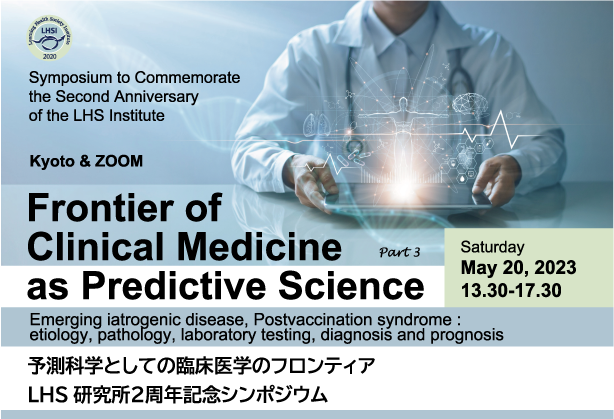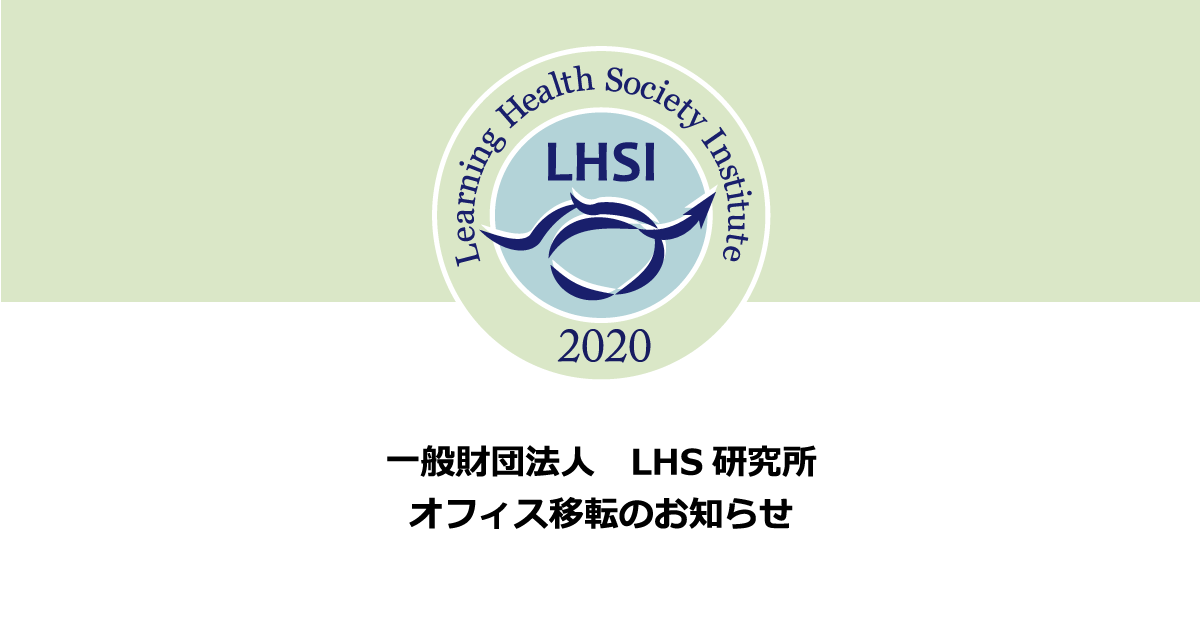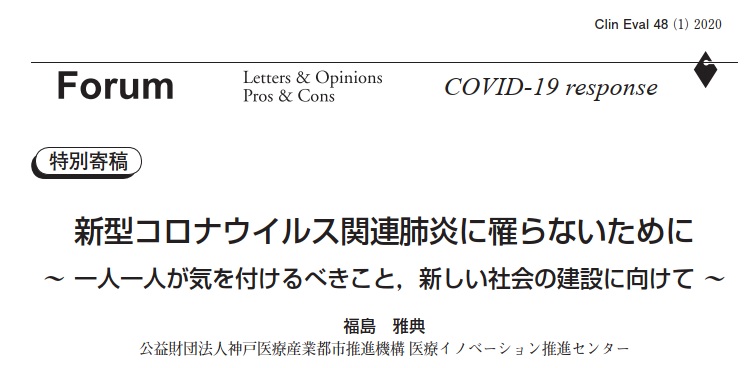
Welcome to the 1st symposium of MCI Forum!
We are pleased to invite you to participate in the first symposium of the “Mild Cognitive Impairment Forum”.
– This symposium will be held as an intensive webinar sessions.
– A total of 12 lecturers will introduce and explain the latest research results on Early Detection/Risk Factors and effective interventions in MCI.
We will be joined by internationally renowned dementia researchers such as Dr. Michael Weiner from UCSF, Dr. Tsuneya Ikezu from Mayo Clinic, and Dr. Nicholas Cullen from Lund University.
*****
「MCI(軽度認知症)フォーラム」の記念すべき第一回シンポジウムは、Webinar 2 Session形式による集中講義を実施いたします。
MCIにおけるEarly Detection / Risk factor と有効なIntervention について、それぞれ最先端の研究成果を講師の先⽣⽅からご紹介・解説いただきます。
海外からはUCSFのMichael Weiner氏,Mayo ClinicのTsuneya Ikezu氏,Lund UniversityのNicholas Cullen氏など,国際的に著名な認知症研究者にもご参加いただきます。
Session 1 後半 モデレーター
猪原 匡史 氏
国立研究開発法人国立循環器病研究センター
脳神経内科 部長
Session 1 後半プログラムはこちら
Moderator for the latter part of Session 1
Dr. Masafumi Ihara
The National Cerebral and Cardiovascular Center, Japan
For Program of the former part of Session 1, Click here.


PROGRAM
■Opening & Introductory Remarks: 11:00 ~ 11:10

鈴木 隆雄 氏
桜美林大学 老年学総合研究所 所長
Dr. Takao Suzuki
Oberlin University
Foreword
On behalf of organizing committee, I am delighted to welcome all of the participants to the 1st MCI Summer Conference with the title of “Frontiers in Early Detection and Intervention of Alzheimer’s Disease”
Dementia including Alzheimer’s disease remains one of the biggest global public health challenges facing our generation. The number of people living with dementia worldwide today is estimated at 55.2 million (WHO; 2021). And as a consequence of the rapidly ageing world population, the prevalence of dementia is projected to rise up to 152million people in 2050 (Alzheimer’s Association; 2019).
As one of the longevity country in the world, Japan has been also working to the various issues of dementia. In 2020, more than 6 million older persons in Japan lived with dementia, and the societal costs of dementia in Japan in 2014 were estimated at JPY 14.5 trillion (USD 112 billion; Sado M; 2018).
Dementia is frequently preceded by a long period of subclinical neuropathological disorder with mild cognitive impairment as a transitional phase before diagnostic criteria for dementia are fulfilled. Mild cognitive impairment (MCI) is defined as a condition in which individuals demonstrate cognitive impairment with minimal impairment of instrumental activities of daily living (I-ADL). The benefit of early detection of MCI is not only to help the people who are at increased risk of developing dementia, but also to identify the time for protection of people against developing dementia by scientific and crucial preventive measures.
In this MCI conference, we will focus on MCI from the view point of prevalence, early detection and diagnosis, prognosis, brain imaging, bio-marker, psychological distress, pharmacological and non-pharmacological treatments, and social burden etc etc. We will also have a thorough discussion on MCI based on the recent scientific evidences at this conference.
I very much welcome the findings of the conference and look forward to continuing to work on MCI in the future.
Session 1: Former Part (前半)
Clinical manifestation and early detection of MCI
■講演1-1: 11:10 ~ 11:30

Michael Weiner 氏
University of California, San Francisco(UCSF), USA
Title:
IMPROVING GENERALIZABILITY OF CLINICAL TRIALS AND VALIDATING PLASMA TESTS FOR AMYLOID, TAU, AND NEURODEGENERATION
USING THE ALZHEIMER’ S DISEASE NEUROIMAGING INITIATIVE(ADNI)
■講演1-2: 11:35 ~ 11:55

池津 庸哉 氏
Dr. Tsuneya Ikezu
Mayo Clinic, Florida, USA
Title & Abstract:
Human neural cell type-specific extracellular vesicle proteome defines disease-related molecules associated with activated astrocytes in Alzheimer’s disease brain
Introduction: Extracellular vesicles (EVs) are emerging vehicles in studying neurodegenerative diseases including Alzheimer’s disease (AD). Almost every cell type in the central nervous system including neurons and glia are known to shed EVs, which can be detected in the cerebrospinal fluid (CSF).Monitoring cell type-specific EVs from patient-derived CSF and profiling their contents by transcriptomic or proteomic analyses provide a useful method to study the pathophysiology of AD. We have recently identified EV unique molecules to human neurons, astrocytes, microglia-like cells, and oligodendrocytes. We applied these datasets for the characterization of CSF EV proteins and their changes in mild cognitive impairment (MCI) and AD cases.
Methods: We performed combined label-free and tandem mass tag-labeling based quantitative mass-spectrometry of EVs isolated from human induced pluripotent stem cells (hiPSCs) by using size exclusion column method and CSF by MagCapture method to conduct a comprehensive EV proteomics study on controls, AD and MCI risk cases. The enrichment of EV was determined by quantitative mass-spectrometry and immunoblotting of EV and non-EV markers. The changes in the cellular composition of the EV profiles were assessed for their correlation with disease status, pathway analysis and correlation with cognitive function.
Results: Novel cell type-specific EV protein markers were identified from induced pluripotent stem cell-derived excitatory neurons (e.g., NCAM1, ATP1A3), astrocytes (e.g., LRP1, ITGA6), microglia-like cells (e.g., LCP1, ITGAM) and oligodendrocytes (e.g., LAMP2, FTH1). Furthermore, cell type-specific EV molecule analysis revealed significant enrichment of astrocyte and microglia-derived EVs in AD CSF compared to control or MCI EV samples. Moreover, Quantitative proteomics analysis showed that EVs expressed 1284 unique proteins in AD, MCI and control groups. Statistical analysis identified three proteins (HSPA1A, NPEPPS, and PTGFRN) involved in AD progression. Finally, the PTGFRN showed a correlation with amyloid plaque (rho =0.404, p = 0.027) and tangle scores (rho = 0.500, p = 0.005) in AD, MCI cases.
Summary/Conclusion: Our study presents novel human neural cell type-specific EV markers, highlights the key role of gliaderived EVs in AD CSF. The study also indicate that three proteins, HSPA1A, NPEPPS and PTGFRN, may be used to monitor the progression of MCI to AD.
■講演1-3: 12:00 ~ 12:15

勝野 雅央 氏
名古屋大学大学院医学系研究科 総合医学専攻
脳神経病態制御学 教授
Dr. Masahisa Katsuno
Nagoya University
Title & Abstract:
At-risk cohort of Lewy body disease
Lewy body disease (LBD) is a progressive neurodegenerative disorder associated with intra-neuronal accumulation of alpha-synuclein. LBD develops parkinsonism and/or dementia: motor symptoms precede dementia in Parkinson’s disease (PD), while cognitive decline is predominant in dementia with Lewy bodies (DLB). Earlier detection of individuals at risk of developing LBD is a key to the future success of disease-modifying treatments. Prodromal symptoms antecede the onset of motor or cognitive dysfunction, indicating an extended prodromal period in LBD. For example, autonomic impairment, such as constipation, develops 15–20 years before the onset. REM sleep behavior disorder (RBD) precedes the motor symptom onset by several years in patients with PD. We discovered that approximately 7% of the population aged 50 years or older have 2 or more prodromal symptoms of PD, based on the results of a questionnaire survey of annual health checkup examinees without neurological symptoms, using the following self-reported questionnaires: Japanese version of the Scale for Outcomes in Parkinson’s disease for Autonomic Symptoms (SCOPA-AUT); Self-administered Odor Question (SAOQ); and REM Sleep Behavior Disorder Screening Scale (RBDSQ). Furthermore, about one-third of such individuals with multiple prodromal showed deficit in dopamine transporter (DaT) single-photon-emission computed tomography (SPECT) and/or myocardial metaiodobenzylguanidine (MIBG) scintigraphy. We are now conducting a blood biomarker study on the at-risk subjects for Lewy body disease, as well as a preventive clinical trial of a potential neuroprotective agent.
■Lunch Break: 12:20 ~ 13:30
Session 1: Latter Part(後半)
Clinical manifestation and early detection of MCI
■講演1-4: 13:30 ~ 13:45

新井 哲明 氏
筑波大学附属病院 精神神経科グループ長
Dr. Tetsuaki Arai
Tsukuba University, Japan
Title & Abstract:
Early detection of MCI and the prevention of progression to dementia
Early detection and non-pharmacological intervention to prevent the patients in the prodromal phase of Alzheimer’s disease (AD) from progressing to dementia is very important.
For early detection, inexpensive and minimally invasive methods are required before the precise diagnosis using molecular imaging targeting aggregated proteins like tau and amyloid beta. Behavioral features such as gait, speech, and drawing might be one of useful markers for early screening of dementia. We have collected gait, speech, and drawing behaviors as well as cognitive and clinical measures from more than 200 cognitively normal (CN), mild cognitive impairment (MCI) and AD participants, and investigated them by using statistical analysis and machine learning models in collaboration with IBM Research. The one of our research results showed that combining all three behavioral modalities achieved 93.0% accuracy for classifying AD, MCI, and CN.
Concerning non-pharmacological intervention to MCI, we established the Cognitive Improvement Day-Care program for individuals with MCI at the University of Tsukuba Hospital in Ibaraki, Japan, in 2013, and the total number of participants rose to ~200 within 7 years. Patients participated together in programs of aerobic exercise, cognitive interventions, music therapy and other recreational activities, which were developed for the prevention of cognitive dysfunction. Our neuroimaging analysis using brain MRI and 99mTc-ethyl cysteinate dimer single photon emission computed tomography demonstrated that the volume of left rostral anterior cingulate cortex and regional cerebral blood flow in the right parietal region were significantly preserved in the high-attendance group compared to those of the low-attendance group. Our results suggest that continuous participation in a multicomponent day-care program may be useful to slow the progression to dementia by preventing reduction of volume and activity in memory-related brain areas in MCI cases.
■講演1-5: 13:50 ~ 14:05

Bin Zhou
LHS研究所 主席研究員
Dr. Bin Zhou
Learning Health Society Institute, Japan
Title & Abstract:
Risk classification of Alzheimer Disease — Outcomes of Shanghai mild cognitive impairment cohort study
Many research indicated mild cognitive impairment (MCI) in the Alzheimer’s continuum is heterogeneity. The early detection or accurate risk classification of Alzheimer’ disease(AD) in mild cognitive impairment is still an issue to be resolved. Combinations of biomarkers could improve risk classification of Alzheimer’s disease dementia. One of the challenges remains is to use clinical commonly available data and translate the results into daily practice. We tried to establish a risk classification using the clinical data commonly available for the clinicians and easy to use in the routine clinical practice. In 2012, we initiated the Shanghai MCI cohort, which is a 3-year follow-up study including 400 MCI subjects. A simple risk classification using the hippocampus volume and neuropsychological test score of the ADAS-Cog-C could detect the higher risk (conversation rate 61.1%) and lower risk group (1.7%) in MCI in three-year follow-up period, indicating an efficient and easy to use approach identifying the individuals at risk of AD for prevention clinical trial. Future we will do a validation study using ADNI and J-ADNI data.
■講演1-6: 14:10 ~ 14:25

三村 將 氏
慶応義塾大学医学部 精神神経科学教室 教授
Dr. Masaru Mimura
Keio University, Japan
Title:
Midlife diet and risk of dementia/mild cognitive impairment
■講演1-7: 14:30 ~ 14:45

永井 洋士 氏
京都大学医学部附属病院 先端医療研究開発機構 教授
Dr. Yoji Nagai
Kyoto University, Japan
Title & Abstract:
WHO Kobe Project for the Exploration of Newer Strategies to Reduce Social Burden of Dementia – Current Achievements and Future Direction
In the face of unprecedented super-aged society, reduction of the social burden for Long-Term Care (LTC) is a pressing challenge of the nation. Particularly, dementia is one of the leading causes for care-requiring status, accounting for 20% of individuals in LTC. In the absence of effective treatments for dementia, earlier detection of individuals at risk and earlier interventions thereby could slow the process of cognitive decline, leading to the prevention of LTC. However, such approaches have achieved only a limited success, in part due to the lack of efficient social mechanism to identify individuals at risk.
Under such conditions, the current project was started in 2016, which is a collaborative research project with WHO Kobe Centre, including 3 population-based cohort studies and 2 interventional studies on cognitive function. Particularly, we examined predictive value of “Basic Checklist” and 3 cognitive function-related questions therein for incident LTC need, and found that the incidence was progressively higher with the number of negative answers to the cognitive function-related questions. Also, as evidenced by the interventional studies, several neuropsychological parameters appeared to be improved after the intensive cognitive training. These findings demonstrate the value of simple questionnaire for the detection of citizens at LTC risk, and suggest the potential utility of intensive cognitive training for the mitigation or reverse of cognitive function decline.
On the basis of these findings, we are conceiving the establishment of a local governmental system, in which risk assessment of LTC is regularly done with the use of simple questionnaire, and appropriate interventions are provided depending on the risk of each individual. Thus, our goal is to lay foundation for constructing such a learning health system in the framework of local governmental services, toward the reduction of social burden of dementia and LTC.
■講演1-8: 14:50 ~ 15:05

Nicholas Cullen 氏
Lund University, Sweden
Title (tentative):
Biomarker-Based Prediction of Longitudinal Tau Positron Emission Tomography in Alzheimer Disease
Session 2
Intervention to prevent cognitive decline
■講演2-1: 15:20 ~ 15:35

瀧 靖之 氏
東北大学加齢医学研究所 教授
Dr. Yasuyuki Taki
Tohoku University, Japan
Title:
Whole body vibration exercise and training increase regional CBF in mild cognitive impairment with enhanced cognitive function
■講演2-2: 15:40 ~ 15:55

岩坪 威 氏
東京大学大学院 医学系研究科 神経病理学分野 教授
Dr. Takeshi Iwatsubo
Tokyo University, Japan
Title & Abstract:
Disease-modification of Alzheimer’s disease in MCI and preclinical stages
A number of disease-modifying therapies (DMT) for Alzheimer’s disease (AD) have been tested in clinical trials, some of which met the clinical endpoints, whereas others, especially those conducted in dementia stages, have failed, underscoring the needs for early intervention. Notably, positive outcomes of recent trials for anti-amyloid-b (Ab) antibody drugs have largely depended on molecular imaging and fluid biomarkers, underscoring the compelling needs of markers that surrogate the clinical and pathophysiological progression of AD. Longitudinal observational studies as represented by AD Neuroimaging Initiative (ADNI) in the North America, as well as the Japanese ADNI, have contributed greatly towards the goal of very early treatment at the prodromal and preclinical AD stages by delineating the early natural course of AD and facilitating the development of biomarkers. It has been demonstrated that the clinical and biomarker profiles of prodromal AD in J-ADNI were remarkably similar to those in North American ADNI, supporting the harmonization of global clinical trials. Furthermore, secondary prevention trials in preclinical AD, i.e., anti-Ab therapies in asymptomatic, amyloid positive elderly individuals (the A4 study), as well as projects to establish trial ready cohorts (TRC) of preclinical and prodromal AD, are being conducted in the US and Japan. J-TRC is comprised of a web study and an on-site study, so far having recruited ~11700 and ~410 participants, respectively. These clinical activities, accelerated by the development and implementation of biomarkers, will pave the way toward the development of AD therapies targeting its very early stages.
■講演2-3: 16:00 ~ 16:15

猪原 匡史 氏
国立研究開発法人国立循環器病研究センター
脳神経内科 部長
Dr. Masafumi Ihara
The National Cerebral and Cardiovascular Center, Japan
Title & Abstract:
Neurovascular approach for mild cognitive impairment
The concept of mild cognitive impairment (MCI) was first introduced for the purpose of identifying individuals in an intermediate state between no cognitive impairment and Alzheimer’s disease (AD). Recently, the heterogeneity of MCI has attracted attention as it has become clear that other diseases, such as cerebrovascular disease and Parkinson disease can also cause mild cognitive deficits, prompting a redefinition of MCI. Heterogeneity of MCI has been confirmed by neuropathological examinations. Most MCI patients not only possess amyloid plaques and neurofibrillary tau tangles, but also cerebral vascular pathology such as arteriosclerosis and cerebral amyloid angiopathy (CAA). CAA induces cerebral infarcts or hemorrhage of varying size and type, attributing to further cognitive impairment. Sporadic AD and CAA has been suggested to be the consequence of Aβ elimination failure, mainly caused by disturbance of the intramural periarterial drainage system. Since severe CAA is an independent risk factor for dementia, facilitation of Aβ clearance has been suggested as a potential treatment of AD and MCI. Many epidemiological studies have shown that vascular risk factors increase incidence of MCI and its progression to AD. Accordingly, control of such factors has been shown to reduce risk of conversion to AD and ameliorate cognitive impairment in AD patients. Neurovascular approaches by use of an antiplatelet agent cilostazol (phosphodiesterase III inhibitor) or taxifolin (flavonoid with strong anti-oxidative and anti-glycation activity) may therefore hold promise for the treatment of dementia in an era of preventive neurology.
■講演2-4: 16:20 ~ 16:35

島田 裕之 氏
国立長寿医療研究センター 予防老年学研究部 部長
Dr. Hiroyuki Shimada
National Center for Geriatrics and Gerontology, Japan
Title & Abstract:
Preventing Dementia and Frailty Using Digital Health
Several technical devices are available to monitor and promote changes in behavior toward higher activity. In particular, smartphones are becoming the primary platform for recognizing human activity. However, the effects of behavior change techniques that promote physical, cognitive, and social activities on incident dementia in older adults remain unknown. We are conducting a randomized controlled trial aims to examine the effects of behavior change techniques on the prevention of dementia among community-dwelling older adults using a smartphone as a behavior change tool. The study cohort comprises 3,498 individuals, aged ≥60 years, randomized into two groups: the smartphone group (n = 1,749) and the control group (n = 1,749). Intervention. The smartphone group will be asked to use smartphone applications for at least 30 minutes daily to self-manage and improve their physical, cognitive, and social activities. The smartphone group will perform 60-minute group walking sessions using application-linked Nordic walking poles with cognitive stimulation twice a week during the intervention period. The walking poles are a dual-task exercise tool that works with a smartphone to perform cognitive tasks while walking, and the poles are equipped with switches to answer questions for simple calculation and memory tasks. The smartphone and control groups will receive lectures about general health that will be provided during the baseline and follow-up assessments. Incident dementia as primary outcome will be detected using cognitive tests (at baseline, after 15 months, and after 30 months) and by preparing diagnostic monthly reports based on data from the Japanese Health Insurance System. Participants without dementia at baseline who will be diagnosed with dementia over the 30-month follow-up period will be considered to have incident dementia. This study has the potential to provide the first evidence of the effectiveness of information communication technology and Internet of Things in incident dementia. If our trial results show a delayed dementia onset for self-determination interventions, the study protocol will provide a cost-effective and safe method for maintaining healthy cognitive aging.
■講演2-5: 16:40 ~ 16:55

下川 宏明 氏
国際医療福祉大学大学院 副大学院長
医学部・医学研究科 教授
Dr. Hiroaki Shimokawa
International University of Health and Welfare, Japan
Title & Abstract:
Development of whole-brain low-intensity pulsed ultrasound therapy for early stage of Alzheimer’s disease.
Background: Although the prevalence of Alzheimer’s disease (AD) has been rapidly increasing worldwide, effective and safe treatment of AD remains to be developed. We have developed a novel therapy with low-intensity pulsed ultrasound (LIPUS) that ameliorates microvascular dysfunction through upregulation of endothelial nitric oxide synthase (eNOS) (Shindo T and Shimokawa H, et al. Ann Vasc Dis. 2020;13:116-125.). It has been demonstrated in animal experiments that NO deficiency in the brain may be involved in the pathogenesis of AD. Indeed, we were able to demonstrate that the LIPUS therapy is effective and safe in animal models of AD and vascular dementia through eNOS up-regulation (Eguchi K, et al. Brain Stimul. 2018;11:959-973.).
Methods: Based on these findings, we conducted the LIPUS-AD trials, which consisted of 2 trials of the LIPUS therapy for early stage of AD (mild cognitive impairment due to AD and mild AD); (1) a roll-in open trial for safety and (2) a randomized, double-blind, placebo-controlled (RCT) pilot trial in a 1:1 fashion for efficacy and safety. The LIPUS therapy was performed for whole brain through the bilateral temporal bones alternatively for one hour 3 times a week as one session under the special conditions (1.3MPa, 32 cycles, 5% duty cycle) that we identified. The LIPUS therapy was performed for one session in the roll-in trial (N=5), and 6 sessions in the RCT trial at an interval of 3 months for 1.5 years (N=22). The primary endpoint was the changes in ADAS-J cog scores from baseline at 72 weeks. This study is registered with UMIN Trial ID: UMIN000033071.
Results: In the roll-in trial, no adverse effects were noted. In the RCT trial, while cognitive functions progressively worsened at 24, 48, and 72 weeks in the placebo group, they remained unchanged in the LIPUS group. Furthermore, the number of responders, in whom cognitive functions did not deteriorate or even improved from baseline, was progressively increased in the LIPUS group, but not in the placebo group. No adverse effects were noted.
Conclusions: These results suggest that the LIPUS therapy could suppress the progression of cognitive impairment in patients with early stage of AD. The present findings need to be confirmed in a next pivotal trial with a large number of patients.
Funding: The Japan Agency for Medical Research and Development (AMED)
■講演2-6: 17:00 ~ 17:15

渡辺 宏久 氏
藤田医科大学 脳神経内科学 教授
Dr. Hirohisa Watanabe
Fujita health University, Japan
Title & Abstract:
Strategies for preventing dementia based on differences in brain network findings between normal aging and early dementia
Unraveling the relationships of brain networks and mechanisms of their resilience is crucial to understanding the mechanisms underlying preserved cognitive function in healthy aging. Hub brain regions, such as control and default mode networks, play critical roles in intra- and inter-network communication, remain well-preserved with aging and contribute to compensatory processes. Conversely, these brain hubs are the preferred sites for lesions in neurodegenerative dementias such as Alzheimer’s disease. Disruptions of primary information processing networks, including auditory, visual, and sensorimotor networks, can relate to the overactivation of multisensory integrated networks classified as control networks. At the cellular level, the brain hub regions contain many synapses and require much energy. These regions are rich in ATP-related gene expression and have high glucose metabolism, as demonstrated on PET. Notably, the number and function of mitochondria, which are the center of ATP production, decline by about 8% every ten years. Dementia patients often have dysfunction of the ubiquitin-proteasome and autophagy-lysosome systems, which require large amounts of ATP and can be related to abnormal protein accumulations. The imbalance between energy supply and demand may cause the accumulation of pathological proteins and play an essential role in the development of dementia. This energy imbalance can explain why brain hub regions are vulnerable to damage in different dementias.
■Summation & Closing Remarks: 17:20 ~ 17:30
Bin Zhou LHS研究所 主席研究員
Learning Health Society Institute, Japan






























